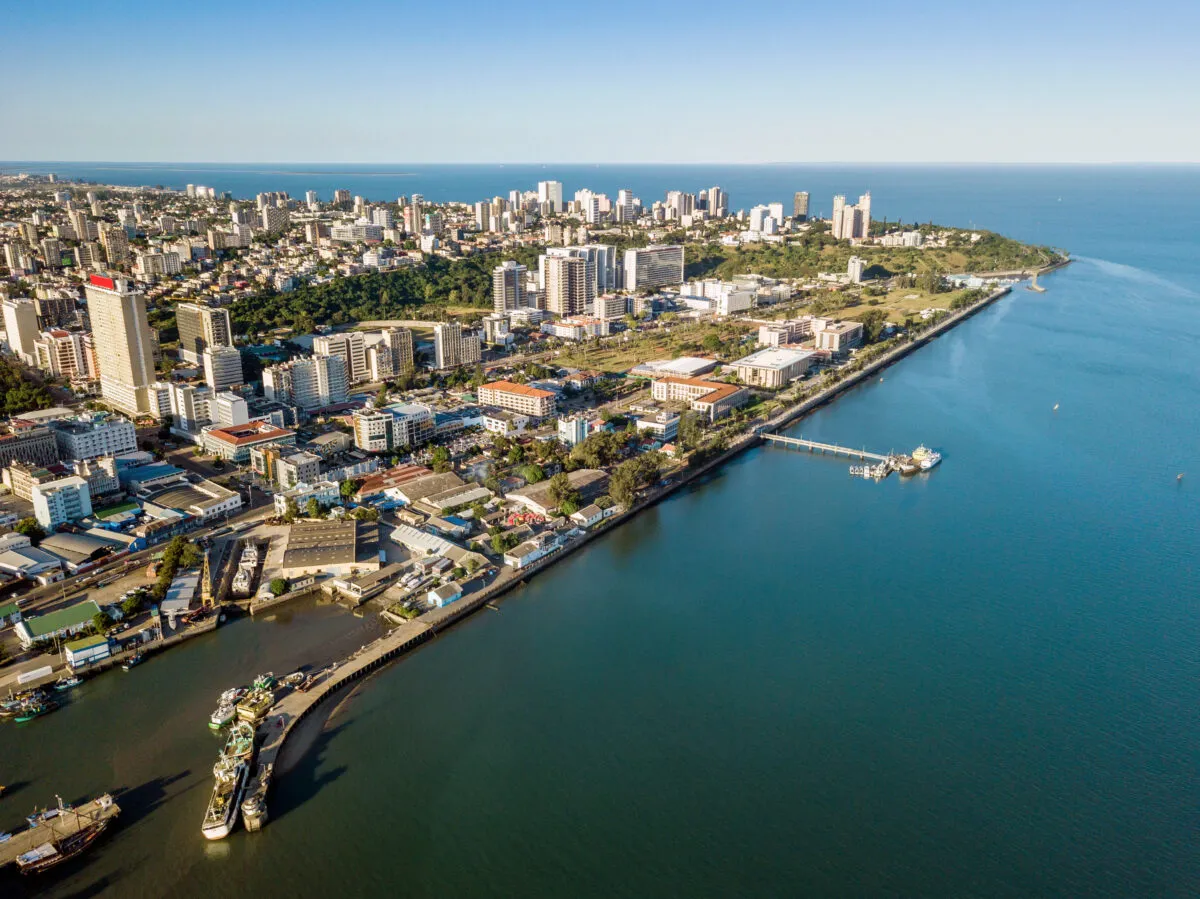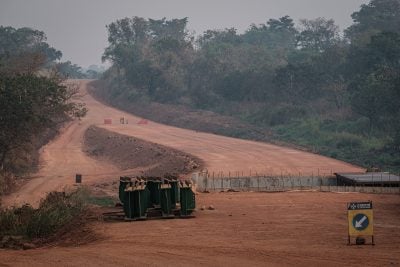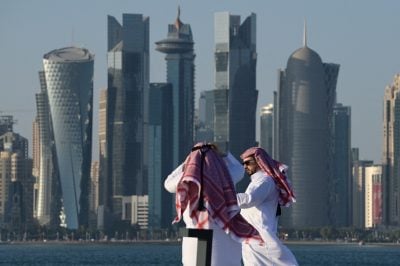In recent years you’d be hard pressed to catch an officially registered bus in many parts of Maputo, the capital of Mozambique. But soon the isolated inhabitants of its many transport-starved neighbourhoods will be able to take advantage of a Bus Rapid Transit system (BRT).
“We are witnessing one of the most exciting moments in the history of transport,” says Fatima Arroyo Arroyo, World Bank senior urban transport specialist and project lead.
The city of 1.7m is home to clusters of towering office blocks, mirror-walled skyscrapers and an imposing bronze statue of Samora Machel, the Mozambican freedom fighter and political leader who served as the country’s first president after it gained independence in 1975.
Yet this bustling metropolis, consisting of Maputo city and its surrounding municipalities of Matola, Boane and Marracuene, has a fundamental disconnect between its fast-growing neighbourhoods and suburbs.
Ramshackle informal minibuses called chapas, and open vans called My Loves packed to the hilt with workers, and often exceeding capacity, ply potholed roads and unpaved dirt roads, many without drainage systems or lighting, making accidents an epidemic.
Grave traffic situation
In July, an incident known as the Maluana tragedy saw 32 people killed and dozens more injured when a bus travelling from Beira to Maputo attempted to overtake a lorry carrying construction sand. An ensuing collision caused the bus to upturn, instantly killing 31 passengers. Another later died in hospital.
Colonial era roads such as the Estrada Nacional 1 (EN1) are built for smaller vehicles, and have no illumination, meaning night drivers have to navigate roads riddled with potholes in the dark.
Enforcement of road traffic law is also rife with corruption, with police accepting bribes for unworthy vehicles on the road without lights, contributing to high rates of road accidents, says Adriano Nuvunga, a professor of political science and civic activist in Maputo.
In September the situation became so grave that a conference of local spiritual healers called on the government to let them address the “supernatural causes” of frequent traffic accidents on a stretch of the EN1 in Manhiça, 80km north of Maputo.
“Since accidents are not stopping, the government will have to sit with us and authorise us to carry out the work,” said Fernando Mate, president of the Association of Traditional Medics of Mozambique (Ametramo), alluding to rituals that form a pillar of the religious beliefs of many Mozambicans.
Bad transport breeds poverty
Around 98% of the cars in the Maputo Metropolitan Area (MMA) are owned by upper to middle income households, and the bottom 40% of the population are dependent on public transport. But nearly half the inhabitants do not live within a kilometre of formal or informal transport links, according to a World Bank report released in August.
The lack of an integrated public transport network in the city is a crucial element of social exclusion that creates urban poverty, limiting the potential of the local economy, population, firms and markets. It represents a major developmental challenge, the World Bank says.
“The deficient access to jobs and services is a major constraint to productivity; it hinders the city’s competitive potential and is a critical element of social exclusion underpinning urban poverty.”
The lack of access to job opportunities also stymies consumerism in the city and thwarts private sector investment due to high transit costs and an overall disconnect of the metropolis’s markets.
The rate of infrastructure development has failed to keep pace with the breakneck speed of urbanisation and the mushrooming suburban development driven by a population that has almost doubled in the last decade, says Nuvunga.
“From a structural standpoint the government has been unable to come with convincing plans to address the public transport crisis in Maputo,” he says.
Failed solutions
A litany of solutions have been offered up that range between being a drain on public finances to being “truly lunatic”, Nuvunga says. “It results in mounting debts for the state and no service for the people,” he explains.
The Futran megaproject hatched in 2021 envisaged a swarm of cable cars suspended on rails above the city. But construction of the $250m project never began. Another plan for an automated transit system of driverless trains, the Automated Guideway Transit, also didn’t raise enough funding to get off the ground.
In 2014 the Mozambican government drew up plans to establish a Bus Rapid Transit (BRT) system. The scheme involved introducing new bus lanes and routes, articulated buses, depots around the metropolitan area, new stations, terminals and an electronic ticketing system.
The project was to be financed by the Brazilian government and built by Brazilian engineering firm Odebrecht.
But in October 2016 a corruption investigation unearthed evidence that Odebrecht had paid bribes of $900,000 to the Mozambican government for the construction of an international airport in the northern city of Nacala that suspiciously had almost no flights or passengers.
As a result, the Brazilian government suspended $4.7bn in financing for 25 public works projects in Africa and Latin America, leaving the project languishing ever since.
Bus system gets green light
However, in August the Maputo Metropolitan Transport Agency and Maputo and Matola municipalities unveiled plans to revive the project, but this time with new financiers and greater ambitions. The BRT blueprint, which will be bankrolled by a $250m grant from the World Bank, aims to be more ambitious, catering to the region’s fast-changing realities.
Unlike the 2014 plan, which was restricted to Maputo city, the new plans span the low-income neighbourhoods of Matola and Boane, and include revamping roads, paving and weather-proofing streets, and adding drainage systems and lighting in a region historically vulnerable to climate change and flash floods.
The BRT project aims to mostly integrate the sprawling network of chapas, which have in the last decade emerged as the main form of public transport due to a lack of state-run alternatives. The chapas will be incorporated into the new transport system by restructuring the fleets to operate as safe, effective collectives, which will be provided with financing to allow them to maintain and upgrade their vehicles.
For the first time the area’s population, expected to reach 4m in 2035, will have an integrated public transport system, says the World Bank’s Arroyo.
“The MMA is now at a turning point to fulfil its potential as an engine for transformation of the country. We expect this operation will ultimately contribute to fostering changes in the way the city is growing from a congested, car-oriented city to a green, resilient, and people-oriented city, where walking and public transport are at the core of the metropolitan vision.”
Asked how the Bank will ensure the plans do not fail like their predecessors, Arroyo says they are encouraged this time around by the government’s drive for reforming the sector. Efforts such as supporting the private sector to renew the bus fleet, and introducing a digitised fare payment scheme using smartcards are planned.
“We recognise that the results require continued adaptation to succeed. The Bank’s support will build on these initial efforts by bringing international experience and technical assistance to further improve their impact.”
Want to continue reading? Subscribe today.
You've read all your free articles for this month! Subscribe now to enjoy full access to our content.
Digital Monthly
£8.00 / month
Receive full unlimited access to our articles, opinions, podcasts and more.
Digital Yearly
£70.00 / year
Our best value offer - save £26 and gain access to all of our digital content for an entire year!

 Sign in with Google
Sign in with Google 





